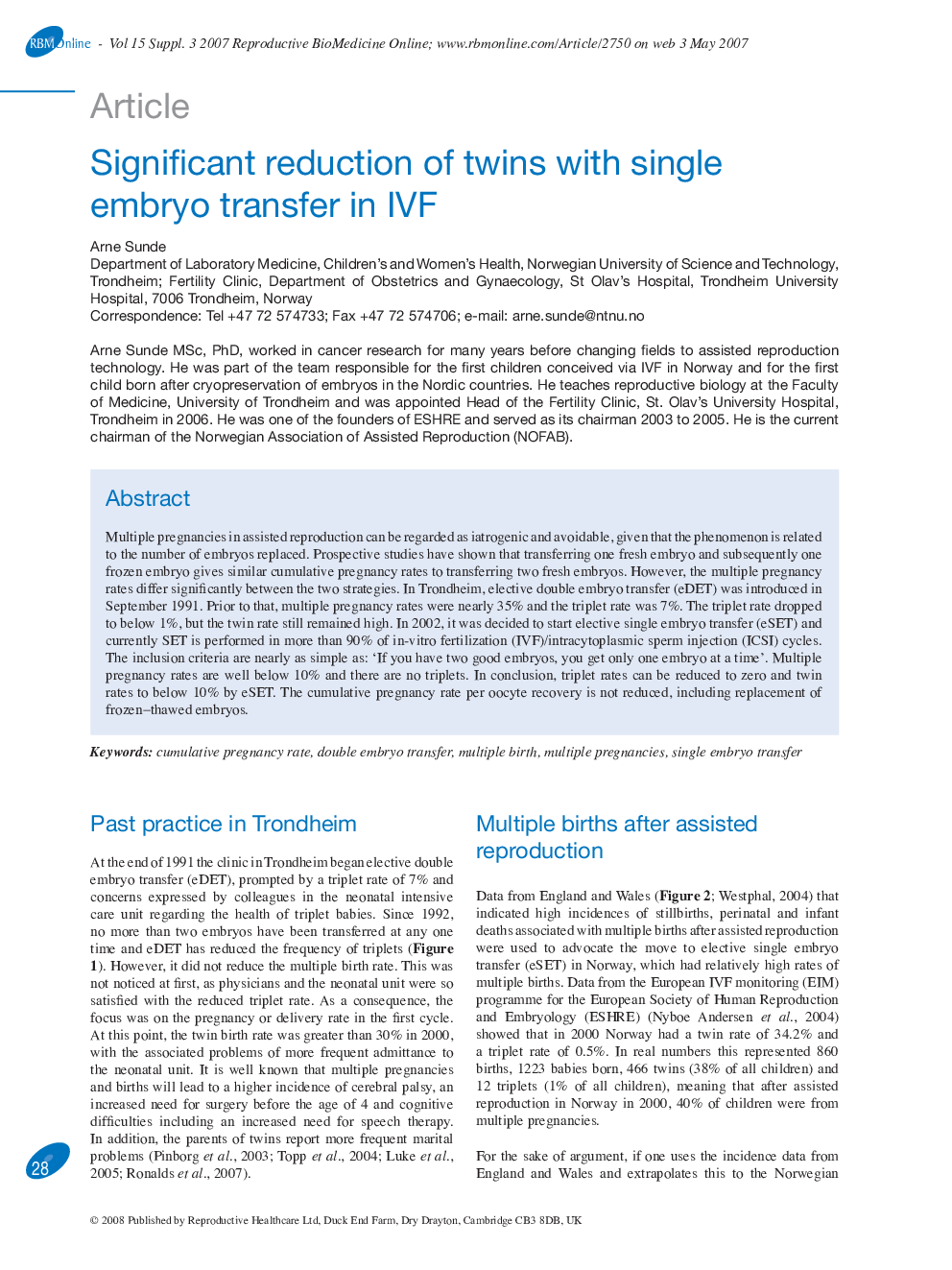| کد مقاله | کد نشریه | سال انتشار | مقاله انگلیسی | نسخه تمام متن |
|---|---|---|---|---|
| 3972793 | 1256823 | 2007 | 7 صفحه PDF | دانلود رایگان |

Multiple pregnancies in assisted reproduction can be regarded as iatrogenic and avoidable, given that the phenomenon is related to the number of embryos replaced. Prospective studies have shown that transferring one fresh embryo and subsequently one frozen embryo gives similar cumulative pregnancy rates to transferring two fresh embryos. However, the multiple pregnancy rates differ significantly between the two strategies. In Trondheim, elective double embryo transfer (eDET) was introduced in September 1991. Prior to that, multiple pregnancy rates were nearly 35% and the triplet rate was 7%. The triplet rate dropped to below 1%, but the twin rate still remained high. In 2002, it was decided to start elective single embryo transfer (eSET) and currently SET is performed in more than 90% of in-vitro fertilization (IVF)/intracytoplasmic sperm injection (ICSI) cycles. The inclusion criteria are nearly as simple as: ‘If you have two good embryos, you get only one embryo at a time’. Multiple pregnancy rates are well below 10% and there are no triplets. In conclusion, triplet rates can be reduced to zero and twin rates to below 10% by eSET. The cumulative pregnancy rate per oocyte recovery is not reduced, including replacement of frozen–thawed embryos.
Journal: Reproductive BioMedicine Online - Volume 15, Supplement 3, 2007, Pages 28-34